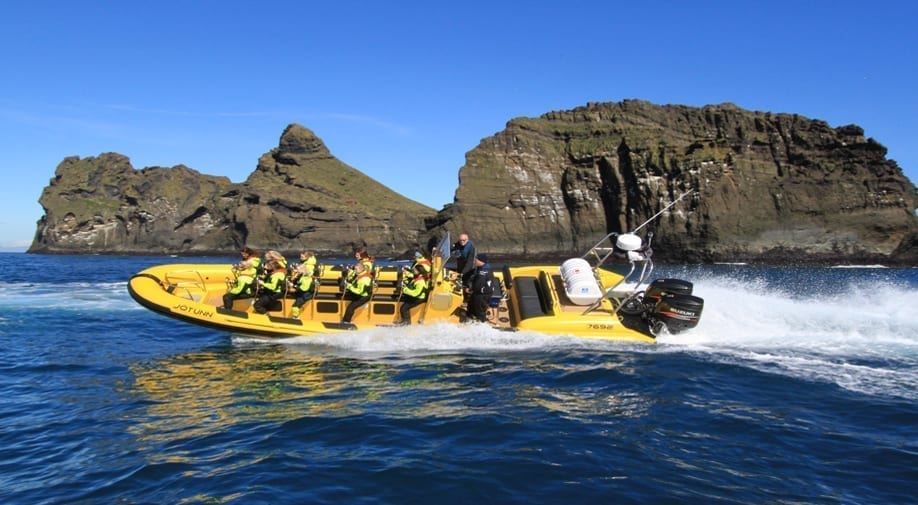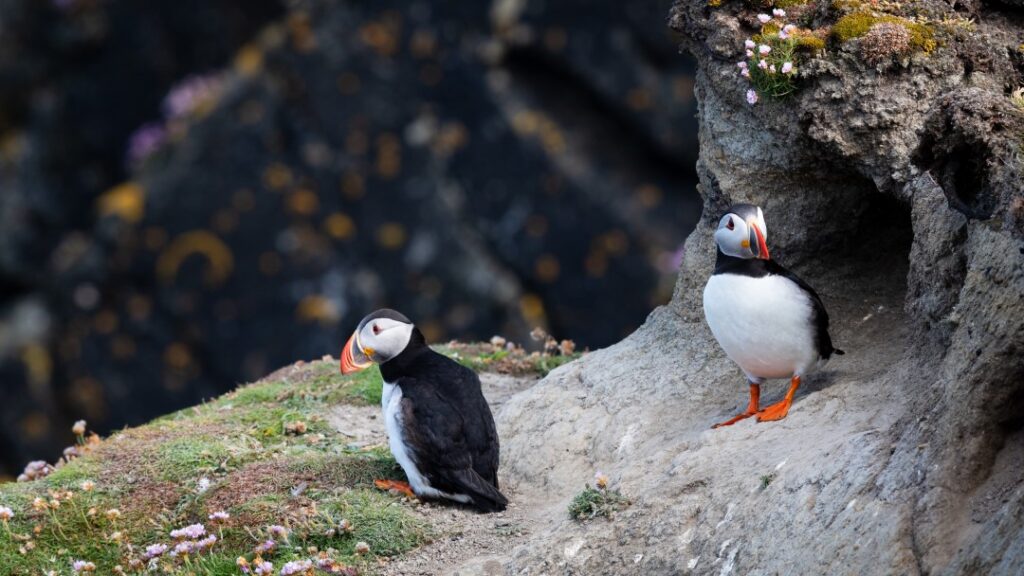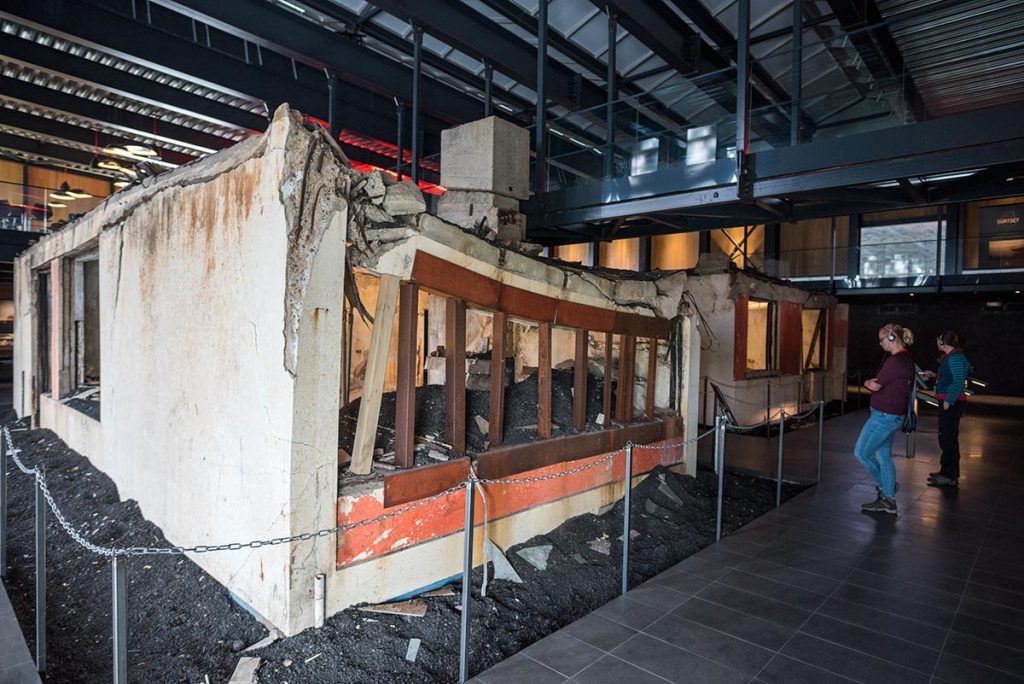What to do in the Westman Islands
The Westman Islands are a rewarding destination whose natural beauty and rich cultural heritage combine to impress and fascinate visitors. The dramatic coastline of this volcanic archipelago is a haven for seabirds, while lupines now colonise decades-old lava flows. It’s well worth the detour from the mainland and there’s plenty of ways to fill the time if you choose to stay for a few days. If you’re planning a trip to the south of Iceland soon, here’s our round-up of what to do in the Westman Islands, including ATV tours, boat trips and much more.
Take a boat trip
Some of the most impressive scenery of the Westman Islands is best seen from the water, meaning that boat trips make a fun and memorable activity during your stay. You could opt for a thrilling RIB safari; departing from the harbour, this high-speed ride gives you the kind of adrenaline rush that will plaster a grin on your face for the duration of the voyage. But, as the pilot cuts the engines, there’s also plenty of opportunities to listen to the sound of the waves hitting the cliffs at places like Elephant Rock and putter inside a towering sea cave to experience its astonishing acoustics. Wildlife such as whales, seals, dolphins and porpoises are also sometimes sighted, and there’s plenty of seabirds to admire including gannets, puffins, fulmars, kittiwakes and more. It’s also possible to take a more sedate sailing trip in a comfortable 80-seater boat. During the trip, you’ll loop the island and listen as your guide’s commentary covers topics such as the 1973 eruption, notable rock formations, the history that underpins the sagas and how people today still make a living from the sea.

Ride an ATV on a black sand beach
One of the most thrilling ways to explore the landscape of the Westman Islands is on an ATV tour. Decide whether you prefer to ride alone or alongside a friend as you go for an hour-long spin around the volcano and over black sand. Full instruction is given prior to setting off and all the gear is provided. The trip is accompanied by a guide so you’ll be able to listen as they tell you some of the background to the places you visit. One of the highlights of the excursion is the chance to visit Prestvik Beach, the site of a shipwreck where a fishing vessel called Pelagus was stranded on the shore. You’ll also get to see the place where a local fisherman called Guðlaugur Friðþórsson reached land after an epic swim in the dark and cold when Hellisey VE 503 sank in 1984. Miraculously, he survived for six hours in the frigid water and then hiked barefoot over the lava to reach help.

Meet a pair of rescued beluga whales
The Sea Life Trust’s Beluga Whale Sanctuary is a popular stop with visitors to the Westman Islands. Its two most famous residents, Little Grey and Little White, are beluga whales that were rescued from captivity in a Shanghai water park. The pair have a strong bond and are often very vocal when they want something from their care team. The rehabilitation process has been a lengthy one. Some of the revenue from ticket sales is earmarked for the construction of an intermediate habitat which it is hoped will help get the beluga whales further along their journey back to the open ocean. The sanctuary is also the base for the puffin rescue centre. As the pufflings (baby puffins) leave their burrows, they can get disoriented by lights or be blown off course by the wind. Volunteers gather them up and deliver them to the sanctuary where they can be checked over for any injuries and then be released back to the ocean. However some need a little extra attention before this can happen and you can visit them while they’re receiving this care.
Watch puffins from inside a clifftop hide
On the far side of the island, it’s possible to watch puffins come and go from a dedicated hide near the cliff top. The Westman Islands is home to a summer colony of 700,000 pairs. Atlantic puffins are seasonal migrants, arriving in Iceland in spring to build their nests and raise their young. Sporting multicoloured beaks and orange feet, they’ve become an Icelandic mascot, seen in multiple guises in every souvenir shop in the country. In mid-August they depart en masse for the ocean within just a few days. If you’re able to visit between these times, one of the best things to do during your stay in the Westman Islands is to watch them as they fly off in search of food, flapping their wings fast to remain airborne. The puffins are a joy to watch as they return to the grassy cliffs too, as these short, squat birds are comical creatures. Though they’re incredibly hydrodynamic when in the water, they look pretty clumsy as they make their approach for a landing and are compelling to watch as a result.

Take a deep dive into the area’s rich cultural heritage at the Sagnheimar Museum
If you’re interested in learning more about the history of the Westman Islands and the people who call it home, this museum is a must. Some of the most iconic aspects of the Vestmannaeyjar culture are covered. There’s an interactive exhibit about the 17th century raid by Ottoman pirates coming from what’s now Algeria and Morocco; children will love the chance to dress up as they learn about what happened. In addition, displays about the island’s puffins and puffling patrols, the fishing industry and what it’s like to live in a volcanic archipelago also make for fascinating reading. The exhibits also cover Þjóðhátíð. Step inside a tent used during the islands’ annual summer arts and music extravaganza, a three-day family-friendly event that has been drawing festival-goers from all over Iceland since 1874.
Visit Eldheimar museum to learn about the 1973 eruption
Though the Westman Islands are volcanic, there hadn’t been an eruption on Heimaey for almost 6000 years. When magma began to flow unexpectedly one night in January 1973, the residents of Heimaey had almost no warning. They were forced to flee with minimal possessions and watch from afar as the lava flowed for five months and covered a fifth of the island. By the time the eruption finished, a new crater – Eldfell – had been created. About 400 homes and businesses had been destroyed, representing around a third of the buildings on the island at that time. Though there was a lasting emotional toll on those affected, an ingenious solution that used seawater to cool the lava before it filled the harbour saved people’s livelihoods. The museum is a fascinating memorial to the events that took place five decades ago; its centrepiece is a house that was engulfed by the ash and lava which has since been excavated.

Hike over a lava field and up a dormant volcano
The volcanic cone of Eldfell, which stands 221 metres above sea level, dominates the landscape of Heimaey. Many tourists jump on the chance to take a hike across a gnarly lava field. It’s especially pretty in summer when great swathes of purple lupines form a brightly coloured carpet that contrasts beautifully with the dark charcoal of the rock. A moderately challenging trail leads up through the lava field and across the red flanks of the volcano to the summit of Eldfell. You might prefer to opt for a guided walk as your local expert can help you point a picture of what happened during those fateful months in 1973 as you hike through the areas directly affected. From the Flakkarinn viewpoint, you can take in the breathtaking panorama back towards the mainland before returning back to the port.Keen to do an ATV tour during your stay in the Westman Islands? Book online or get in touch today.